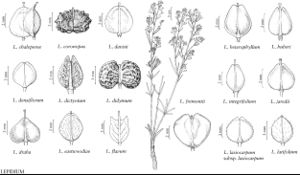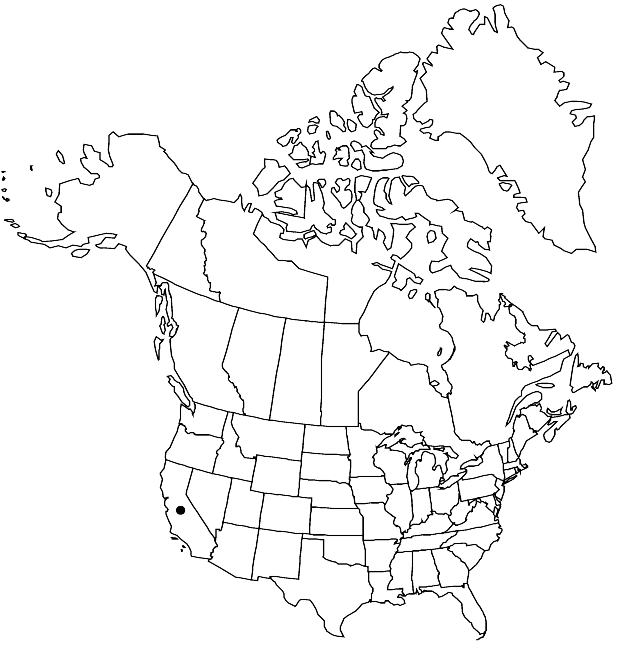Lepidium jaredii
Zoë 4: 398. 1894.
Annuals; sparsely pilose (at least distally). Stems simple or several from base, erect to ascending, branched distally, 1–6(–7) dm. Basal leaves (withered by anthesis); not rosulate. Cauline leaves sessile; blade lanceolate to linear, 2–7.5(–10) cm × 2–10 mm, base cuneate to attenuate, not auriculate, margins entire or sparsely dentate subapically. Racemes considerably elongated in fruit, (lax); rachis usually pilose, rarely glabrous, trichomes usually curved, cylindrical. Fruiting pedicels divaricate to horizontal, straight or slightly sigmoid, (terete), 5–15 × 0.15–0.2 mm, pilose adaxially. Flowers: sepals oblong, 1.8–2.5 × 0.9–1.5 mm; petals lemon yellow (fading whitish), spatulate, 2.8–4 × 1.2–1.8 mm, claw 1–1.4 mm; stamens 6; filaments 1.8–2.5 mm, (glabrous); anthers 0.5–0.6 mm. Fruits broadly ovate, 3–3.8(–4) × 2.8–3.2(–3.5) mm, apically not winged, apical notch 0(–0.1) mm deep; valves thin, obscurely veined, smooth or minutely papillate, glabrous; style 0.3–0.8(–1) mm, exserted beyond apical notch. Seeds (reddish brown), oblong, 1.8–2.2 × 1–1.4 mm. 2n = 16.
Phenology: Flowering Mar–Apr.
Habitat: Arroyos, washes, alkaline bottoms and meadows, dry hillsides
Elevation: 500-700 m
Discussion
Of conservation concern.
Lepidium jaredii is known from Fresno, San Benito, and San Luis Obispo counties.
Selected References
None.

